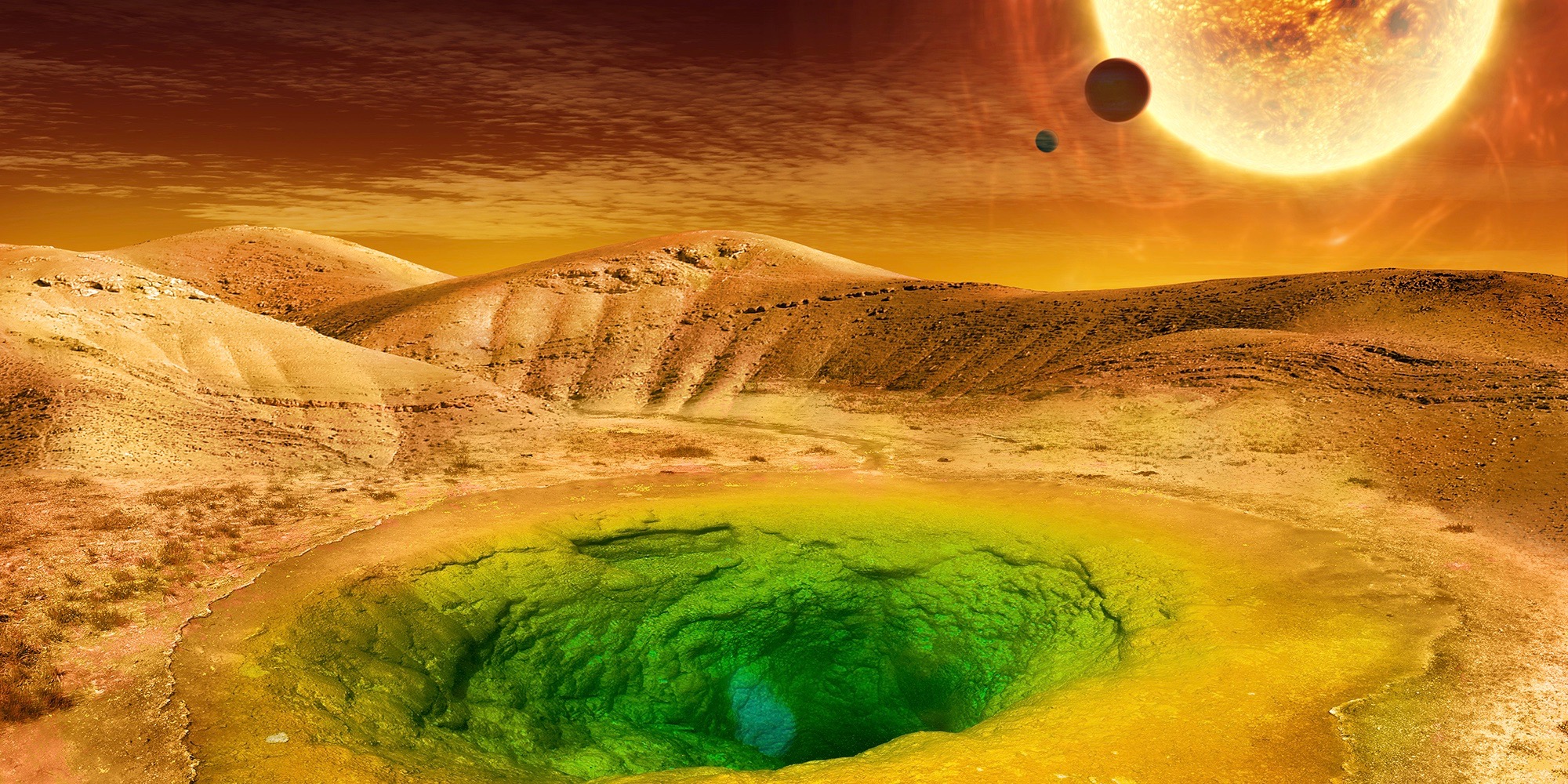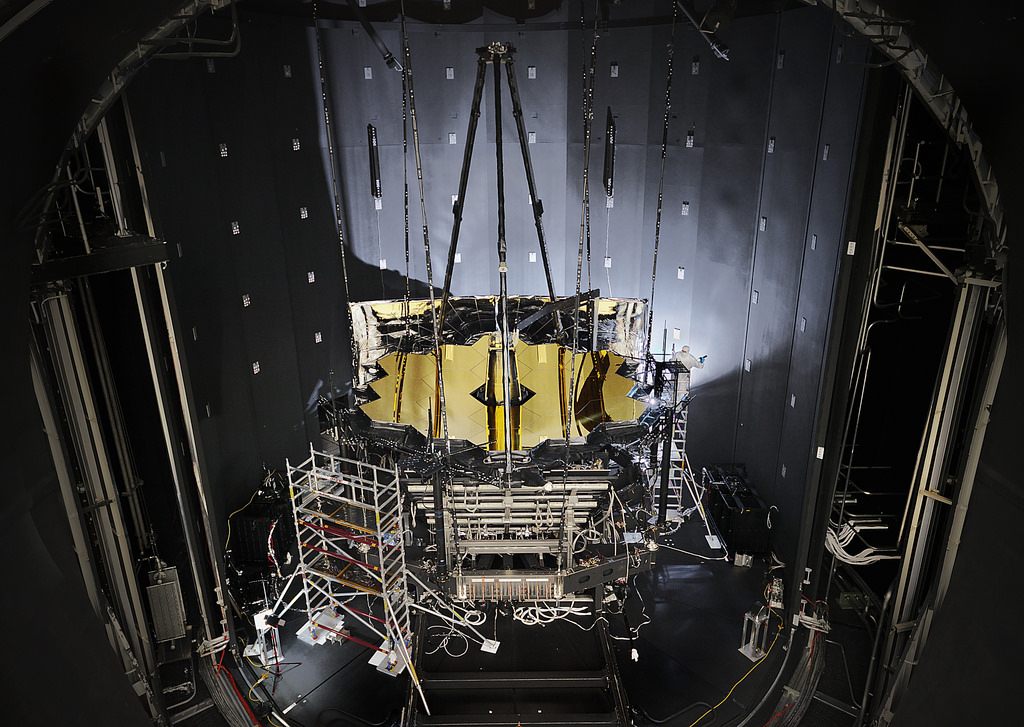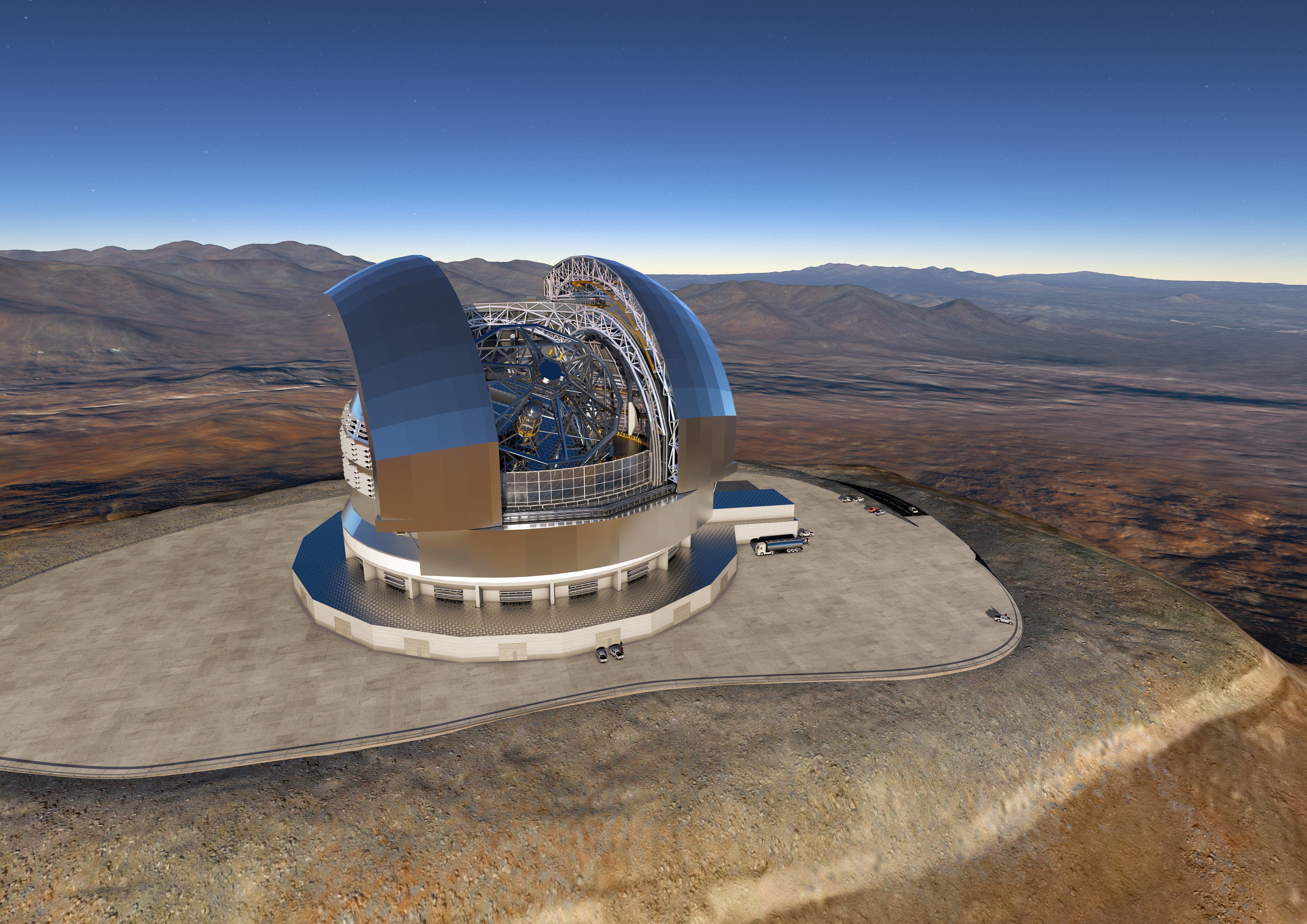How to find signs of life in space

Astrophysicists of the NCCR PlanetS contributed to a series of NASA papers that lay out strategies to search for signs of life beyond our solar system. They assume that the detection of atmospheric signatures of a few potentially habitable planets may possibly come before 2030.

Testing the James Webb Space Telescope that will launch in 2020. (Photo NASA/Chris Gunn)
Three years ago, NASA has gathered researchers from around the world to support and accelerate techniques to answer the question: Are we alone? Russell Deitrick and Daniel Angerhausen of the University of Bern are part of this international network that has now produced a comprehensive series of papers outlining the research on how to search for signs of life on extrasolar planets outside our solar system. Since we are currently unable to visit exoplanets, scientists must use telescopes to remotely examine them for so-called biosignatures. Deitrick and Angerhausen, astrophysicists at the Center for Space and Habitability (CSH) and NCCR PlanetS at the University of Bern, co-authored an article that discusses the existing and future telescopes, both ground-based and space-based. The review is now published in the June 2018 issue of the journal Astrobiology.
“Detecting life is such a daunting challenge,” says Russell Deitrick: “Just about every day I go from hopeful to cynical and back again.” He thinks that the next decade will mainly be focused on improving the understanding of exoplanets in general and life on Earth. “It is potentially in the decade after when we get telescopes and new technologies that will really have a shot of detecting potential biosignatures,” he summarizes. Daniel Angerhausen describes his feeling about this work as follows: “When people ask what my biggest dream is, I always say that I want to be part of the team that finds life in space. These reviews feel like a big step in that direction and show the path we will take.”
Cool stars come first

In Chile the European Southern Observatory ESO is building the Extremely Large Telescope ELT. (Image ESO/L. Calçada/Ace Consortium)
In their study the researchers demonstrate how the exoplanet community will evolve from the current assessments of the sizes and orbits of these faraway worlds, to thorough analysis of their chemical composition, and eventually whether they harbour life. The astrophysicists conclude that the James Webb Space Telescope (which will be launched 2020) and 30 meter-class ground-based telescopes (in the early 2020ies) will enable systematic chemical investigations of potentially habitable planets around cooler stars. Similar studies of these targets around Sun-like stars, however, will likely require a designated spacecraft mission for direct imaging, with the first possibility being WFIRST (Wide Field Infrared Survey Telescope, to be launched in the mid 2020ies). The researchers assume that the detection of atmospheric signatures of a few potentially habitable planets may possibly come before 2030. This will be an important milestone on the way to a more detailed systematic survey beyond 2030.
But Russell Deitrick warns: “Anything we detect will be ambiguous, so I see biosignature detection as really just the beginning of the search for life. After that we still have the whole process of vetting and understanding, which is why we are making so much effort to do this now.” In fact, one of the papers now published in Astrobiology discusses ways that nature could trick scientists into thinking a planet without life was alive, or vice versa. The authors review ways that a planet could make oxygen without life, and how planets with life may have signatures other than the oxygen that is abundant on modern-day Earth.
The international network funded by NASA’s Astrobiology Program is called “Nexus for Exoplanet System Science” (NExSS). Being part of it is a unique experience for the astrophysicists in Bern. “This effort brings together so many disciplines,” says Russell Deitrick: “It really challenges you to think differently.” And Daniel Angerhausen adds: “I am proud and happy to be a little gear in this amazing and diverse community.”
Categories: News, Uncategorized

